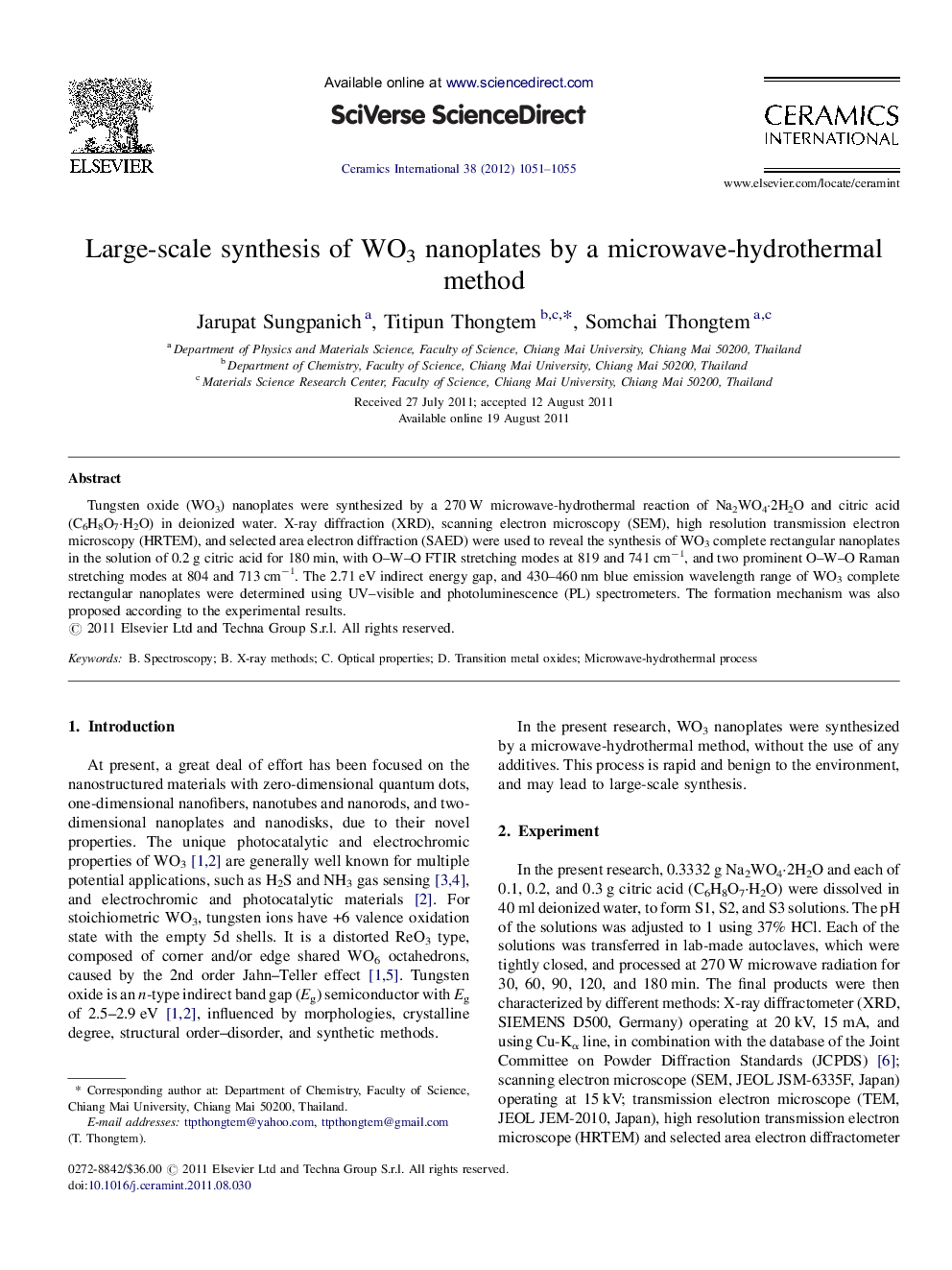| Article ID | Journal | Published Year | Pages | File Type |
|---|---|---|---|---|
| 1462491 | Ceramics International | 2012 | 5 Pages |
Tungsten oxide (WO3) nanoplates were synthesized by a 270 W microwave-hydrothermal reaction of Na2WO4·2H2O and citric acid (C6H8O7·H2O) in deionized water. X-ray diffraction (XRD), scanning electron microscopy (SEM), high resolution transmission electron microscopy (HRTEM), and selected area electron diffraction (SAED) were used to reveal the synthesis of WO3 complete rectangular nanoplates in the solution of 0.2 g citric acid for 180 min, with O–W–O FTIR stretching modes at 819 and 741 cm−1, and two prominent O–W–O Raman stretching modes at 804 and 713 cm−1. The 2.71 eV indirect energy gap, and 430–460 nm blue emission wavelength range of WO3 complete rectangular nanoplates were determined using UV–visible and photoluminescence (PL) spectrometers. The formation mechanism was also proposed according to the experimental results.
